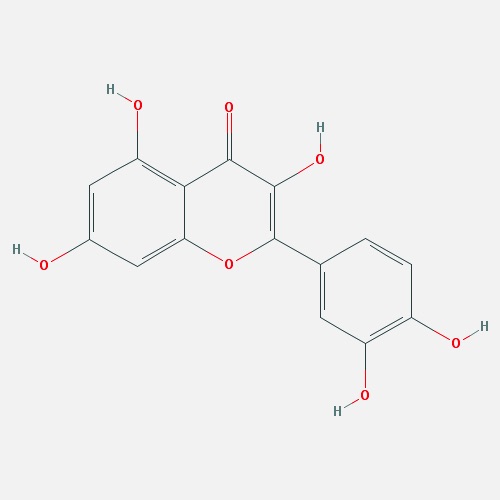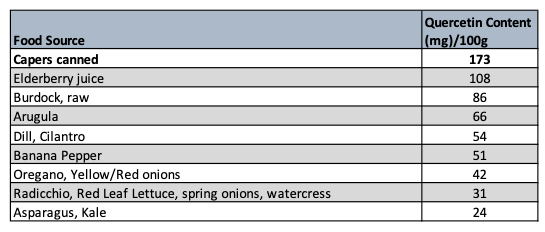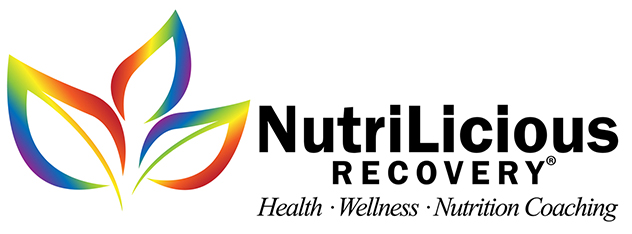
by dnshah | Oct 2, 2020 | Health and Wellness Tips
As people we know are privately engaging COVID19 effects in their bodies, I am reminded that we hold the key to our own wellness. We have some control over how optimal our immune system reacts and functions. While it’s true that our DNA can’t be changed, we can change the way our DNA is expressed… opening the door for creating our own destiny. We create our own future regardless of what our DNA’s weak links are. The science of epigenetics (changes in gene expression) and neuroplasticity (brain’s ability to reorganize synaptic connections) invite us on a journey of dreaming our highest potential and a path to get there. We work with our current DNA… and we leap to a reality of how we make it express better and respond stronger. Yes, we can do this, even for those of us with predictive ancestrage conditions like heart disease, diabetes, obesity, autoimmunity, and even some cancers. How do we do this? In a nutshell, we have to feed our immune system what it needs AND we have to change our behaviors to make our brain constantly learn things. It’s a process and we know it works! That’s the exciting part! This month we’ll talk about the food choices that are OPTIMAL; and next month we’ll talk about the behavior changes that are OPTIMAL.
I’m going to make it simple for you to always remember… because it is that important, especially in the post-Covid19 world. The acronym is GBOMBS. And it represents all the adaptogens we need to thrive. This is what we need EVERY DAY. Adaptogens are plants that fight stress and provide safe balance within our body… they help regulate our body’s functions by turning processes down and up – like a thermostat. I’m explaining each letter of the acronym below, and I hope you enjoy eating your new destiny!
- Greens
You may not like the taste of arugula or Brussels sprouts, but your body can really benefit from it. In this category I include anything green that one would use in a salad or a grain bowl. Imagine a fresh salad with mixed greens and broccoli, or a fresh cabbage coleslaw, or even a cut of relaxing green tea. It’s not always about taste the first time you change your routine menu, but your palette will become adjusted to the new flavors you add in your life… and very soon your tongue may begin to crave the things that shape up the new you! Try it out and see…prove me wrong.. I challenge you! Sulforaphane is an adaptogen in cruciferous vegetables which include so many greens like cauliflower, cabbage, rutabaga, watercress, kohlrabi, kale, and my favorite bok choy. The greener it is, the better!
- Beans
Legumes, Dals, Beans, and Peas all fall under this plant-based protein category. They are tiny parcels that are rich in minerals, protein, antioxidants, and fiber. Many legumes contain precursors to neurotransmitters like dopamine and adrenaline. More research needs to occur in this area, but we believe there is some value here in reducing psychological stress. As we become more aware of dangers of animal proteins (red meats & processed meats classifications associated with carcinogens), we are looking for other means of getting our optimal protein needs met. This is a great place to look for adding more protein into your day… and you’ll get some valuable adaptogens – which are not found in other animal proteins!
- Onions
The allium family which includes many kinds of onions and garlic are powerful adaptogens, and are revered among several cultures through centuries as being medicinal plants. I tell my clients to include a VARIETY of alliums in their meals, cooked or raw. They are nutritious and delicious – NutriLicious!
- Mushrooms
Many varieties of mushrooms exist; the beautiful white champignon boxed in your grocers, the plump woodsy Portobellos in gourmet markets, and the dried potent ones for tea in your Chinese stores. All are great for nutrition, but specifically the dried ones are powerful adaptogens associated with anti-cancer benefits. Shiitake, Reishi, Lion’s Mane are the ones that I have looked into for gene expression; but that doesn’t mean your grocer mushrooms aren’t great for you.
- Berries
Berries consist of vitamins, antioxidants, and epigenetic adaptogens. I try and include some color each day in my smoothie. Berries are also known for boosting brain function, and they are tiny parcels of bold flavors.
- Spices
There are a collection of powerful adaptogen spices that health experts all over the globe are using daily in their meals or supplementing themselves with. Among them are ginger, turmeric (curcumin), cardamom, black pepper (piperine), thyme, oregano, cinnamon, rosemary, and chili peppers (capsaicin). Incidentally research has shown these spices are known anti-inflammatory agents as well. So be sure an include a few in every meal – another NutriLicious strategy!

by dnshah | Oct 2, 2020 | Health and Wellness Tips
Post-Covid19 we’ve seen depression and anxiety on the rise in the US. Nearly 50% of Americans report that COVID19 is negatively impacting their health according to a Kaiser Family Foundation poll. There was a 1000% increase in registrations for a federal emergency hotline, and 20,000 texts came in on that hotline in April, 2020. What do these stats mean? It means that Americans are afraid, and there is little being discussed in mainstream media about what to do to help. It almost feels like there isn’t a plan.
There were some NY health care workers without history of mental illness that died by suicide. They were frontline workers. The situation unfolding here in the US as well as in other countries is a challenge. For those that remain farther away from the scenes in hospitals, and for those that don’t know anyone dealing with the illness… it may be easier to say that COVID19 isn’t affecting their mental health. For the rest of us, it can create exhaustion, anxiety (overactive worry), fears, sadness, and depression. And so… we are in the midst of a mental health crisis.
When our nervous systems begins to exhibit signs of chronic stress, we have to cope by activating the part of our nervous systems that relaxes our body’s functions – “rest & digest” part of our nervous system called the parasympathetic nervous system. It’s important to take actions that allow your mind a break from the realities of the world. Whether it’s a 20-minute soak in a bubble bath, or a power nap mid-day, the body needs more breaks to tackle the day’s events, news, and latest worry.
Actions that are highly recommended include breathing exercises (Pranayama), meditation, massage therapy, bath soaks, aromatherapy. In all of these holistic therapies, you are tuning out the world and setting your focus internal to your body to regulate yourself on a slower mode. Actions that are not recommended include alcohol and substance use. Although it may seem calming at the end of the day to pour out the wine and drink it, I agree a little won’t hurt (1 glass for women, 2 glasses for men), but the temptation to consume more than that is pretty high. The fluctuations in your body’s processes for excess alcohol can increase your risks for adverse health outcomes when it becomes a regular thing. And it doesn’t change your point of focus. For you to focus on something different that your external world, you must guide that focus internal. No one else can drive your focus… not even the words on this screen. You decide and choose where to place your focus, your thoughts, your worry, and your fears. And that is the thing that you DO CONTROL.
Relaxing your overactive nervous system can help bring about a balance that restores your spirit… and your happiness. “It may sound weird or too easy to be true… how can a bubble bath help me during COVID19?” Give it a try.
Wishing you all health & safety. If you feel you need to reach out and talk with someone about your mental health, here are the crisis hotlines:
National Suicide Prevention 800-273-8255
Crisis Text Line 741741 (text HOME)
National Domestic Violence 800-799-7233
Social Services Helpline 211
Nami Helpline 800-950-NAMI
Substance Abuse & Mental Health 800-662-4357

by dnshah | Oct 2, 2020 | Age Defying, Diet and Weight Loss, Health and Wellness Tips, Stress Management, Virus
These days health professionals are exploring what supplements and foods can help specifically with COVID19 illness. While we all explore ways to get GBOMBS into our daily routine, what does one do if they feel especially concerned about lung function? The answer could lie in quercetin.
Quercetin is a natural pigment in many fruits, vegetables, and grains. (plant-based not animal). It’s an antioxidant which also boosts immunity, is anti-inflammatory, and reduces blood pressure and allergy symptoms.
Antioxidants are compounds that bind to free radicals. Looking back at chemistry, free radicals are end products of reactions where there are free floating electrons – remember them? I recall my Chemistry teacher telling me he thought that was a carcinogenic thing. Fast forward almost 40 years and now I can say, he was right. Free radicals are damaging to the body, and are linked to numerous chronic illnesses, including cancers, heart disease, and diabetes.
Antioxidants neutralize the free radicals by binding to them and this helps minimize the destruction that could occur. A recent study I looked at (May, 2020) shows that quercetin has benefits specifically with lung cancer cells. Some people take quercetin supplements, but I always prefer real God-made foods. Common quercetin food sources include:


by dnshah | Oct 2, 2020 | Dessert, Health and Wellness Tips, Recipes
Recipe by Rebecca Pytell
Yield: 15 pieces
INGREDIENTS
- 1 cup dark chocolate chips
- ½ cup Tahini
- ¼ cup pure Maple Syrup
METHOD
- Melt the dark chocolate chips in a greased, microwave-safe bowl, at 30 second intervals.
- Once melted add in the tahini and maple syrup to the melted chocolate. Mix well to combine until thick.
- Press the thick mixture on a parchment-lined baking dish (4×8 pan).
- Place parchment paper over the top of the fudge and press down to smooth.
- Place the covered fudge in the freezer to harden (about 1 hour) before slicing.
- Store in the freezer. Take the fudge out about 4-5 minutes before eating.

by dnshah | Oct 2, 2020 | Health and Wellness Tips
I recall eating Indian gooseberries (amla) the summer I spent 2 months in Mumbai, India. I was in search of them after reading study after study of the benefits of this true super-fruit. My cousin-in-law, Tushar, brought some to me and (after thoroughly washing) I popped one little gem into my mouth – not knowing what to expect in terms of taste. It gushed slightly sour, mostly sweet, and very currant-like. They were tasty, and I would eat them solely for taste if I had access to the fruit; but Indian gooseberries are not easily found in the US in fresh fruit form. They are now sold as an extract, juice, dried, salted, pickled, sweetened jam (Chyavanprash), and frozen forms throughout the US – from Indian grocery stores. You can visit or order online. Indian gooseberries (amla) should not be confused with other gooseberries from other part of the world.
Many amla eaters are seeking out this fruit for the numerous benefits.
In terms of treating and preventing cancer, amla has been shown not only to kill cancer cells but leave normal cells alone. This was tested with 6 human cancer cell lines: lung, liver, cervical, breast, ovarian, and colon. Post-study It was suggested to research amla as a possible chemo-preventative agent.
In terms of blood-glucose management, just ½ teaspoon of dried amla was as effective as Rx medication.
Some people don’t like the taste of amla, but desire the health benefits – so they may use the dried powder version and cover up the taste with cacao (chocolate) or other fruits and create a superfood smoothie. Many Indian people use the Ayurvedic amla jam, called Chyavanprash. There are Ayurvedic detox products that include amla juice or amla extracts. So there are ample ideas of incorporating amla into your daily routine. Remember that before you change your diet to discuss the change and reasons for the change with your doctor, who would be more knowledgeable about your particular bio-individuality.

by dnshah | Oct 2, 2020 | Health and Wellness Tips
Since so many of us are working from home, it’s important that we are working in spaces that are the right height/elevation for our height and arm measurements so you are minimizing the strain on your body. So who are the experts that decide how high your desk should be, or chair, or even your keyboard placement? The ergonomic team! Here are some suggestions in creating the perfect home/office environment:
CHAIR: find one that is comfortable to sit in first. Ideally, your feet are resting on the floor or a foot rest; your pelvis and lower back are snugly against the back of the chair (This helps minimize undue pressure on your spine). If your back isn’t snugly against the back of the chair, place a pillow behind your back to lean on. Being slightly reclined takes a little pressure off the lower back.
DESK: When sitting at a chair by your desk, observe your arms. They should be bent between 90°-115° when using your keyboard. Your wrists should be in a neutral position (not resting on the keyboard). Your shoulders should be relaxed, and your elbows should be as close to your sides as possible (or on chair armrests).
MONITOR: The top of the monitor should be at eye level so your neck doesn’t have to strain. This also helps with dry eyes, headaches, and blurred vision. Your eyes should be 24 inches away from the computer screen, and it is advised to give your eyes a 20-second break every 20 minutes by looking 20 feet away. I didn’t make that up – it is a real thing. It’s called the 20-20-20 rule. So set your timer’s and give it a try.
LAPTOP: If you are working with a laptop, the ergonomic position is a challenge to achieve because your arm position and your eye position can’t be achieved properly. If possible, get a separate monitor to place on top of books; or get a separate keyboard and raise your laptop monitor on top of books.
BED WORKSTATION: If you are working from bed, you may observe that you are slumping over a laptop. This can lead to neck/back pain, so strive for better. Sit with your back snugly against the headboard with a pillow horizontally cushioning your lower back, and another pillow vertically cushioning your spine. Next use a pillow underneath your thighs to reduce pressure on your lower back. Use a meal tray on top of a pillow for your laptop. Remember your arms should be around 90° angle and your eyes should be looking at the top of the computer screen.
STAND-UP COUNTER: If you find yourself at the kitchen countertop for a standing workstation, good for you! The same rules apply. Elbows should be bent around 90° for typing on keyboard, and the top of the monitor is at eye level. It’s a good strategy to change from sitting to standing workstations often (20 minutes sitting/ 8 minutes standing/ 2 minutes moving around). One advantage to working from home is more flexibility to change your body position regularly and keep moving. This does benefit your muscles and minimize your strain.









